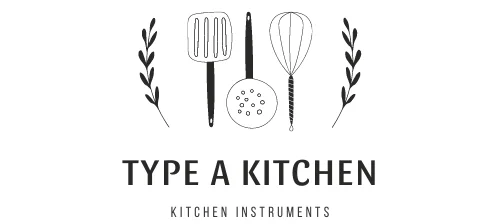Introduction:
Having an organized pantry can make a world of difference in your daily cooking and meal preparation. One often-overlooked aspect of pantry organization is arranging cans in a way that maximizes accessibility and efficiency.
Whether you have a small or large collection of canned goods, knowing how to organize them properly will save you time searching for ingredients and help prevent food waste.
The first step in organizing your cans is to group them by category. This could include grouping together soups, vegetables, fruits, sauces, and so on. Not only does categorizing your can make it easier to locate specific items when needed, but it also gives you a clear overview of what you have available.
Consider using labels or dividers to clearly mark each category for quick identification. Once you’ve categorized your cans, the next step is to arrange them in a logical order within each category.
Overview of How to organize cans in the pantry
One common way to organize cans in the pantry is by grouping them based on their type or category. Another effective method is organizing cans based on their expiration dates. Additionally, using storage solutions such as racks or tiered shelves can maximize space in your pantry while keeping your canned goods neatly organized.
These racks allow cans to be stored in a vertical manner and make it easier to see what you have available at a glance. The use of labels on both the front and top of each can will further enhance organization and enable quick identification without having to move multiple items around.
10 ways How to organize cans in the pantry
1. Categorize by Type:
Start by separating your cans into different categories such as vegetables, soups, fruits, and beans. This will make it easier to find what you’re looking for when meal planning or cooking. Once you have established the different types of cans, consider further subcategorizing them based on specific characteristics. For example, within the vegetable category, you can separate them into subcategories like corn, peas, and green beans.
2. Utilize Step Shelves:
By using step shelves, you can easily organize your cans based on types or categories, making it simpler to locate specific items when needed. For example, you can dedicate one level for soups, another for vegetables, and yet another for sauces or condiments. This system not only helps keep everything in order but also makes it more convenient when meal planning or grabbing ingredients while cooking.
3. Use Adjustable Can Organizers:
One effective way to organize cans in your pantry is by using adjustable can organizers. These organizers are designed specifically for cans and provide a convenient solution to keep them neatly arranged and easily accessible. Adjustable can organizers typically feature multiple levels or tiers that allow you to stack cans on top of each other, maximizing the available space in your pantry.
4. Utilize Magazine Holders:
Utilize Magazine Holders: Another clever way to organize your pantry cans is to repurpose magazine holders. These holders are typically made of sturdy material and have a slanted design, making them perfect for holding cans in an organized manner.
Simply place the magazine holder on a shelf or inside a cabinet, and stack your canned goods vertically inside each compartment. This not only maximizes storage space but also allows you to easily see and access each can without having to rearrange the entire pantry.
5. Arrange by Expiration Date:
One effective way to maintain a well-organized pantry is by arranging your cans according to their expiration date. This method ensures that you use the oldest items first, reducing the likelihood of food waste. Begin by carefully inspecting each can and noting down its expiration date.
To make this process more efficient, consider using a permanent marker to label the expiration dates directly on the cans. Once you have gathered this information, group the cans together based on their expiry dates, with those expiring soonest in one section and those with later dates in another.
6. Label the Shelves:
When labeling the shelves, consider categorizing them based on the types of cans you have. For example, you might have separate shelves for vegetables, soups, sauces, and fruits. This way, when you need a specific type of can, you can easily locate it without having to search through multiple shelves.
To make the labels more visually appealing and easily recognizable, consider using color-coded labels or adding small images of the canned goods next to their respective categories. This simple yet effective organizational method will save you time and frustration when searching for specific cans in your pantry.
7. Utilize Pantry Door Space:
One effective way to maximize the space in your pantry is by utilizing the often-overlooked pantry door space. Install an over-the-door organizer or a set of wire racks on the inside of your pantry door, allowing you to store cans and other small items without taking up valuable shelf space. This not only keeps your pantry more organized but also makes it easier to locate specific items when needed.
8. Create a Rotating System:
One effective way to organize cans in your pantry is by creating a rotating system. This system ensures that older cans are used first, reducing the chances of food waste. One strategy is to place new cans behind the existing ones so that when you reach for a can, you automatically grab the oldest one.
Another approach is to group similar types of canned goods together and label them with dates of purchase or expiration. By doing this, you can easily locate and use the oldest cans before they expire.
9. Utilize Under-Shelf Baskets:
One effective way to organize cans in your pantry is by utilizing under-shelf baskets. These handy storage solutions can be easily installed underneath the shelves in your pantry, providing additional space for cans and other smaller items.
By using under-shelf baskets, you can maximize the vertical space in your pantry and ensure that every inch is utilized efficiently.
10. Regularly Check and Restock:
To maintain an organized pantry, it is essential to regularly check and restock your canned goods. By doing so, you can ensure that you always have a well-stocked supply of your favorite canned foods and avoid any unpleasant surprises when you go to grab something off the shelf.
Make it a habit to set aside some time every few weeks or once a month to go through your pantry and take inventory of what you have.
Conclusion:
Organizing cans in the pantry is a simple yet effective way to maximize space and improve functionality. By categorizing cans based on type or frequency of use, you can easily locate and access them when needed. Utilizing storage solutions such as shelves, racks, or bins can further optimize your pantry’s organization.
Regularly reviewing and decluttering your canned goods will ensure that expired items are discarded and that your pantry remains tidy. So why wait? Start implementing these tips today and transform your pantry into a well-organized space that makes meal preparation a breeze!


